LEVI and MARTHA (HILL) BOSTICK HISTORY
(from History of Texas with Many early settlers; The Lewis
Publishing Company, 1895)
Levi Bostick was born in North Carolina; Martha Hill was born in South Carolina; they were married in the former State and lived there some years when they emigrated to Alabama and settled at Montgomery. After several years’ residence in that place they came to Texas, in 1829, locating on Mill Creek, in Austin County. From this place they moved, in 1831, to Colorado, and there the following year Mr. Bostick died.
His widow survived about ten years, dying at the same place in 1840. They were the parents of nine children, six of whom accompanied them to Texas, the two eldest daughters having married and settled in Alabama before the family’s removal from that place, and a third daughter, who also had married, moving to Texas at a later date.
It need not be added that this is one of the pioneer families of Texas. The dates given show that fact. Whatever measure of honor the public is prepared to accord to the memory of these brave men and women who left the comforts of civilized life came to’ this wilderness country to plant, seeds of civilization, Levi Bostick and his faithful wife are entitled to, for they were among the first, and helped to bear the burdens incident to the opening of this fair domain to settlement by the white race. They were not permitted to live long enough to gather any benefits from their toils and hardships, but died with the consciousness of have having been, in their humble and unpretentious way, instrumental in blazing the road to a better state of things for their posterity than was open to themselves on the threshold of life, and it is to their credit also that their descendants properly appreciate the gifts so secured to them, these having received along with the greatest material blessings the yet greater blessings of intelligence, coupled with honest pride and patriotic sentiment.
Nine children accompanied the Bosticks
Of the nine children born to Levi and Martha Bostick, those who accompanied them to Texas were: Comfort (Bostick), who was subsequently married to Washington H. Secrest; James H. Bostick; Amanda Bostick, who was married first to William Eaton, the celebrated William B. Travis being their groomsman, after the death of Mr. Eaton, in 1836, she was married to Frederick Scranton; Levi T. Bostick; Sion R. Bostick; and Martha Ann Bostick, the last named married to Felix Secrest. Three daughters, being the eldest of the family, Sarah Bostick, Elizabeth Bostick and Mary Bostick were married in Montgomery, before the parents moved to Texas, Sarah was married to Alexander Shaw and died in Alabama; Elizabeth, who was married to David Pogue, was living in 1895, at the advanced age of ninety years; Mary was married to Daniel T. Fitchett, and subsequently (1833) came to Texas.
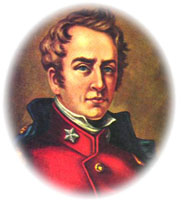
Three sons in the service of the Colonists
The three sons were in the service of the Colonists during the troubles with Mexico, in 1835-6, all of them belonging to Houston’s army, the two eldest being on detached duty, and the youngest, Sion R., being present at and taking part in the battle of San Jacinto. Levi T. Bostick was also a volunteer in the Confederate army and died during the war, I in North Carolina. James H. Bostick died at his home in Austin county, this State, in 1839.
The youngest, Sion R., was still living in 1894, a resident of San Saba, Texas, and was (1894) the only survivor of the three men who captured General Santa Anna the day after the battle, about eight miles from the camp. All the daughters but one, Mrs. Amanda Scranton, of Houston, were deceased by 1894. But there were many grandchildren, the descendants of Levi Bostick and wife now numbering between eighty and ninety souls. (1894)
Daniel T. Fitchett, who married Mary Bostick, and was a resident of the city of Houston during the later years of his life, was a native of Accomack County, Virginia, where he was reared until he was a lad well up in his teens. He was educated in Baltimore, Maryland, and in that city began his career as a clerk in the mercantile business. He went to Alabama when a. young man, and at Montgomery met and married Mary Bostick. He resided in Montgomery several years after his marriage, coming thence to Texas in 1833. He was thus also an early settler of this State, and shared, to some extent, the privations of the pioneer band. He settled at first on the Colorado, near where his father-in-law had settled but moved in a year or so to Brazoria. While residing here he took part in the organization of the first Masonic lodge ever organized in Texas, this being the one afterward revived as Holland Lodge, No.1 of Houston.
See all books by Donna R Causey
Fitchett’s were born in Montgomery
From Brazoria he moved to Columbia, and finally to Houston, in 1842, where he died with yellow fever two years later. His widow lived to the age of eighty-four, dying at the residence of her granddaughter, Mrs. William Anderson, in Kerr County, in 1892. They were the parents of five children, four of whom, Mary Ann Fitchett, William Henry Fitchett, Martha Jane Fitchett, and Virginia E. Fitchett, were born in Montgomery, Alabama, one Daniel T Fitchett., being born soon after the family’s arrival in Texas. All of these became grown, were married and had large families.
The eldest, now Mrs. Mary A. Bryan, widow of Dr. John L. Bryan, was a resident of Houston, being, in point of actual residence in the State, one of the oldest Texans in the city. Mrs. Bryan had a fund of recollections of Texas in early days, and oftentimes delights her friends and visitors with her reminiscences. The following report of a half hour’s conversation with her is given almost in the language in which she spoke and is reproduced here as an appropriate close to this brief family sketch: Asked if she remembered the trip from Alabama to Texas in 1833, Mrs. Bryan answered:
“Very well in deed. I was then a girl of ten; saw and heard nearly everything that was going on and recall the most that I saw and heard very distinctly. Our family, consisting of father, mother, and four children, left Montgomery, Alabama, for Texas in the latter part of August 1833. We came by steamer across Lake Pontchartrain to New Orleans and thence up the Mississippi to Red river and up that stream to Natchitoches, Louisiana. After a week’s rest at that place my father bought an ambulance and team of horses, packed the vehicle with supplies suitable for an overland journey of 400 or 500 miles, loaded us in, and started for my Grandfather Bostick’s place on the Colorado, nine miles above where the town of Columbus now stands. I remember that I looked forward to this part of the trip with a good deal of interest, for I had lived all my life in town, and, girl-like, I had enough of the romantic in my nature, even at that age, to relish the idea of an overland journey through the wilderness country of Texas. I was not disappointed in my anticipations; for the first day out I was charmed with the novelty of the sensations I experienced, and each succeeding day brought a wealth of entertainment for my youthful mind. From Natchitoches, Louisiana, we took the usual route of travel to Nacogdoches, Texas, which latter place I remember now as an exceedingly shabby-looking old town, part Mexican and part American, the plaza, as they cal1ed the business portion of it, being crowded with wagons drawn by oxen and horses, and a large number of very rough-looking men on horseback, thrown in, as it seemed to me, for good measure.
Our journey to Sabine was accomplished without incident
The men all wore big hats, and I recollect that I was especially impressed with the immense quantity of rope which those on horseback had their saddles, as well as with the general elaboration of their equipments, including a liberal display of firearms. As far as I can now remember our journey to the Sabine was accomplished without incident. We crossed that stream on the 1st of September and camped near the house of a settler, who had planted his roof-tree thus far in the wilderness and was enjoying life in the primeval forest, while at the same time he had surrounded himself with most of the material comforts of civilization.
I remember this old settler with especial gratitude, for a little boy being added to our family the night we pitched our tent near his place, and I but ten and the eldest of four children, we needed some friendly assistance, which was extended to us the spirit of the Good Samaritan by the ladies of the old settler’s household, and continued as long as there was need for it. We remained at this place for something like month, when we resumed our journey, my mother being sufficiently strong at the end of that time to warrant the undertaking.
We followed the old Nacogdoches and San Antonio road, then called the’ King’s Highway,’ and crossed the Trinity and Brazos by means of ferries, though at what points I have forgotten, if indeed I ever knew; but I remember the Trinity bottoms. For six miles, or further, we pulled through this densely-timbered stretch of country, and I recollect distinctly seeing the driftwood up in the trees, thirty to forty feet high, my father said, though it seemed to me much higher. We were told that the Trinity had been unusually high that spring and this debris had been deposited by it while it was up. “
I have since becoming grown, heard old hunters talk feelingly and with fire in their eyes of the pleasure of the chase in Texas in early days and while I being a woman, could never, of course, enter with spirit and understanding into this conversation on this subject, I think I can understand something of the feeling, from what I saw of the hunters paradise which this country offered before it was settled. not a day passed, hardly an hour in the day, on our trip that we did not see herds of buffalo, antelope, deer, and flocks of wild turkey, not to mention bands of mustangs and Mexican wild cattle and other animals offering in fact opportunities for any sort of sport, as well as means of subsistence.
Prairie was covered with grass
There was but little underbrush then, the fires put out by the Indians every year keeping this burnt down and one could see even in the thickest timber for half a mile. The prairie, as well as the woodlands, were covered with grass as high as a man’s head, and this great ocean of billowy verdure was painted with flowers of a thousand hues, making a scene of bewildering beauty and grandeur and one that I never recall without feelings of the keenest delight. It was nature just as it came from the hand divine, and outrivaled, as, in my judgment, nature always does, the work of art.
We reached Grandfather Bostick’s place early in October and found there Grandmother Bostick and her three sons and three daughters, Grandfather Bostick having died the year before. The meeting was a joyful one; for while our trip had not been very unpleasant, all things considered, still we were glad to be once more among our people and have the comforts of home.
My father settled on a farm where the town of Columbus now stands, but after a residence here of s little over a year he moved to Brazoria, in order to send us children to school, and at this place and at Columbia, to which he subsequently moved, he spent most of his life in Texas. My father rented the first house of any size in Brazoria, and for some years kept a place of public entertainment. I remember that Stephen F. Austin was his guest once after his return from Mexico and while on his way to old San Felipe he was given a banquet, which was attended by all the important people of the place.
Old enough to understand
While residing in Brazoria one of our neighbors was Dr. Anson Jones, afterwards President of the Republic, then, however, only a practicing physician, but the leading one in that section of the country and most estimable gentleman. “I was old enough to understand to some extent the significance of the political and military movements that took place in rapid succession during the~ year of 1835, and when hostilities actually began between the settlers and Mexico and the news came flying across the country that the dictator, Santa Anna, had invaded Texas with a large army the incidents of the Run-away Scrape became firmly impressed on my mind; but these things have passed into the general history of those times, with which I do not doubt you are quite familiar, so that what I might say would neither add to your knowledge nor afford you much entertainment.
I always feel interested in these matters, however, and, having lived so long in Texas and become so much attached to the State and its people, I earnestly hope that sufficient interest will be awakened in those olden time and the brave and generous men and women who figured in them that enough of their lives, characters, and service to mankind will be preserved to do their memories justice in years to come.
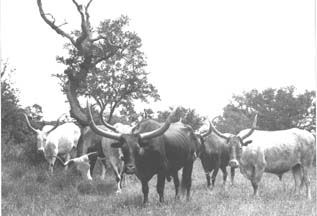 The early Texans had a thrilling history. They were unique people, and there is, as it seems to me, material for all sorts of literature to be found in a study of their lives, experiences, and adventures. The reader of the history of those times may miss much of the real flavor of the lives of those old pioneers, will probably never see in flesh such men and women as the first Texans were, but he can gain an approximate idea of them and the conditions amidst which they lived; and I am sure that no more interesting or instructive line of investigation can be taken up than that of early Texas history and the ways and customs of early Texas people.”
The early Texans had a thrilling history. They were unique people, and there is, as it seems to me, material for all sorts of literature to be found in a study of their lives, experiences, and adventures. The reader of the history of those times may miss much of the real flavor of the lives of those old pioneers, will probably never see in flesh such men and women as the first Texans were, but he can gain an approximate idea of them and the conditions amidst which they lived; and I am sure that no more interesting or instructive line of investigation can be taken up than that of early Texas history and the ways and customs of early Texas people.”
Alabama history and genealogy books
ALABAMA FOOTPRINTS Exploration: Lost & Forgotten Stories (Volume 1) is a collection of lost and forgotten stories about the people who discovered and initially settled in Alabama.
Some stories include:
- The true story of the first Mardi Gras in America and where it took place
- The Mississippi Bubble Burst – how it affected the settlers
- Did you know that many people devoted to the Crown settled in Alabama –
- Sophia McGillivray- what she did when she was nine months pregnant
- Alabama had its first Interstate in the early days of settlement
Click here to Join Amazon Kindle Unlimited 30-Day Free Trial and choose from over one million Ebooks to read for FREE!


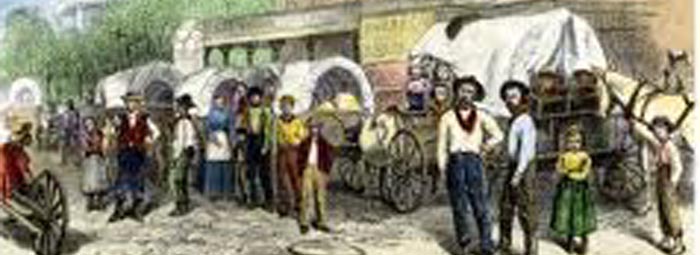
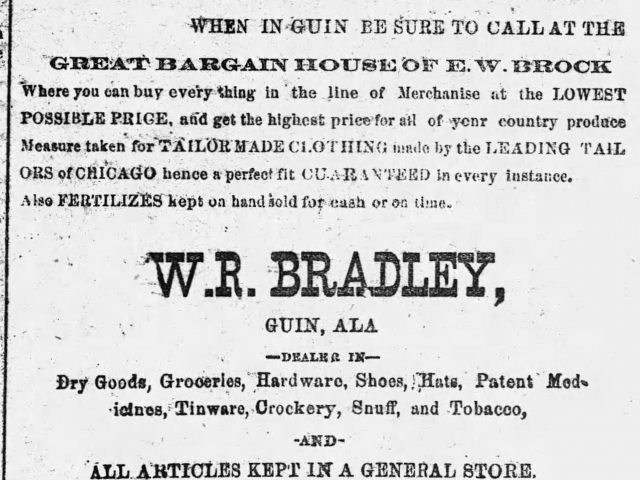
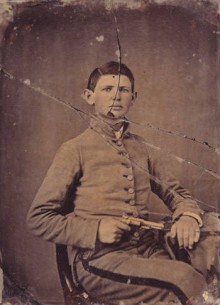
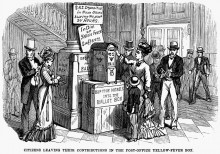
I love history.
Diana Bostick. Relatives?
Oh wow. I bet they are. I know my family settled on the east coast but closer to VA not NYC. Going to send to my dad. Thanks Amy!
I just love history.
thanks
I’ve always marveled at the pioneers and settlers. They were a different breed unlike any ever in history.
A good read